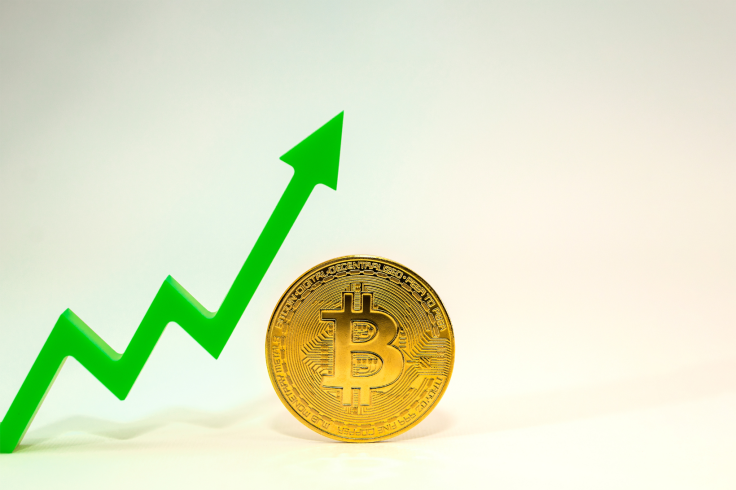Bitcoin Price Factors and Prognoses
Analysts say inflation, political instability, and Bitcoin's built-in scarcity could drive prices sky-high over the next decade

A decade from now, the price of Bitcoin may increase considerably from its current value, and several reasons lead us to think this way.
Policies, generation shift, scarcity, and inflation of fiat money may make Bitcoin a reliable asset in the future and an interesting investment option.
In this article, we will discuss the signals indicating that the Bitcoin price is likely to grow and provide short- and long-term price forecasts.
What Influences Bitcoin Price?
Bitcoin BTC news today is in favor of Bitcoin. In recent days, the prices surged, and all the experts tie that to the political turbulence caused by the US government shutdown.
Historically, there has been a notable trend of increasing positive sentiment towards investing in cryptocurrencies amid political turbulence.
According to Investopedia, it wasn't only Bitcoin that saw a price increase in September. Bitcoin treasury Strategy (MSTR), crypto exchange Coinbase Global (COIN), and stablecoin issuer Circle (CRCL) were up at least 2%.
Yet, the government shutdown is not the only factor that can influence Bitcoin prices.
The rising inflation of fiat currencies makes them vulnerable as a means of investment, and having Bitcoin and other cryptocurrencies as an alternative variant for people is the best option.
According to Anthony Pompilano, the founder and CEO of The Professional Capital Management, Bitcoin's price will continue to surge as long as governments and central banks keep printing money. This situation positions Bitcoin and other cryptocurrencies in a superior position compared to fiat currencies, losing their power as inflation erodes it.
Bitcoin is protected from inflation with the practice known as halving.
During the halving events, which take place every four years, the amount of bitcoins awarded to miners for adding a block is halved. For example, after the first halving event in 2012, this amount equaled 25. After the last halving in 2024, it became 3.125. In two years, in 2028, it will be 1.56 and so on.
It is predicted that the last bitcoin will be mined in 2141. As of now, 900 bitcoins are mined daily, but there are only about 1 million bitcoins left.
Since the coins become scarcer every year, the interest and the demand for the currency grow exponentially.
This mechanism also protects Bitcoin from inflation. Since the number of coins doesn't increase faster, the price is kept higher, and after every halving event, there is a trend for them to become even higher.
So, inflation, halving, and political instability are the key factors that influence Bitcoin's growth. And since we may be sure that the coming years will bring us more of that, there are definite signs that Bitcoin's uptrend will last for years.
Bitcoin's Short- and Long-Term Prognosis
The latest cryptocurrency news say that September was a good month for Bitcoin, with the cryptocurrency reaching record highs. The market was bullish, and the trend is prognosed to last through October.
According to the cryptocurrency price prediction portal, Changelly, the highest price in October is predicted to be $132,877.24. In November, the prices are predicted to go lower: the monthly maximum will be $126,663.03.
The year will close at a similar level: the highest price in December is projected to be $115,646.73.
Yet the years to come have more optimistic prognoses. It is predicted that by the end of the decade, Bitcoin will approach one million dollars in its price. The highest price of the decade is predicted for December 2030, and in January 2031, Bitcoin will cross the record level of one million dollars.
In the past, there were many predictions that didn't come true over time. John McAfee famously predicted that the price of Bitcoin would reach $500,000 by 2020, which never happened. Yet, it is quite possible that the milestone will be reached several years later.
Bitcoin's Still the World's Unique Crypto
The interest in Bitcoin can also be supported by the fact that it is the first and most decentralised cryptocurrency so far. Bitcoin is based on the proof-of-work consensus mechanism. According to it, miners must compete in solving complex mathematical riddles before earning coins. As of now, the winners receive 3.125 coins as a reward. Other blockchains are based on the proof-of-stake consensus mechanisms, allowing network members to stake their assets to add new blocks to the chain. The person who stakes the most has the most voting power, which still creates the prerequisites for centralisation.
Also, other cryptocurrencies don't have any supply limits, while it is only possible to mine 21 million bitcoins.
Bitcoin's uniqueness and difference from smart-contract-based coins are one of the important factors to fuel demand and sustain the high price levels.
Summing up
Since Bitcoin is unique, rare, and protected from any form of inflation by the proof-of-work consensus mechanism and halving events, it has all the chances to sustain its status as one of the world's most sought-after and invested in cryptocurrencies in the coming years.
About the Contributor: Alex Carter is a freelance writer and content strategist with a focus on business, technology, and digital innovation. With years of experience creating content for international audiences, Alex enjoys exploring emerging trends and sharing insights that help readers stay informed and inspired.
© Copyright IBTimes 2025. All rights reserved.





















